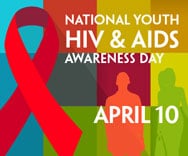In no way do I want to
minimize the serious complications of Zika. However, the media buzz surrounding
Zika offers an unexpected gift- effective STI (sexually transmitted infection) education.
What is Zika doing that AIDS did not?
·
Zika normalizes TALKING about STIs
Zika arrived as the newest
“malaria”- a mosquito-borne illness, with the added threat of potentially
devastating consequences in pregnant women. Like familiar flu season reports,
headlines track Zika’s progress across geographical borders, firmly
establishing Zika as a hot topic. Pictures of infants with birth defects tug at
our hearts, while reporters jockey to broadcast the latest Zika developments. And
then, BOOM- when health experts discovered that Zika could also be transmitted sexually...the conversation automatically
extended to include condom usage and medically recommended abstinence. Zika fortunately
lacks the “yuck” factor (and visual images) that shove other STIs out of
well-mannered conversations, so the buzz continues.
·
Zika clearly shows ANYONE can get an STI
HIV/AIDS pointed a national
spotlight on STIs, but that light was sharply focused on subpopulations at the
highest risk- homosexual males, sex workers and IV drug users. The greatest
myth is that STIs only occur “over there, in those people” (translation- not MY peers). After twenty years of
private practice in an educated, affluent community, I can assure you that sexually
transmitted infections also occur commonly in college students, soccer moms
(and dads), and successful professionals who fit none of the traditional “high
risk” subgroups. (Curious?
Check out Seductive Delusions: how
everyday people catch STIs for a sneak peak behind exam room doors.)
·
Zika, like most STDs,
is often SILENT.
Zika may cause mild to severe
symptoms including fever, rash, headache, painful joints and irritated eyes. In
pregnant women, Zika can cause birth defects.
But Zika often causes no symptoms
at all, which means infected people may have no idea they are carrying a
disease that they can pass on to another person- which is the scariest truth
about ALL sexually transmitted infections. For example, chlamydia, the most common
bacterial STD, causes either very transient or no symptoms the vast majority of
the time (90% in males, and at least 70% in females), yet if not diagnosed and
treated, can lead to chronic pelvic pain and even infertility. Take home
lesson? “No symptoms” does NOT equal “no
disease”. Get tested. Ask your
partner to get tested.
·
PREVENTION is better than CURE
For Zika, prevention is all
we have. Travel advisories, environmental pest control, and personal insect
repellent target mosquito transmission. Consistent condom use for all types of sexual
intimacy (oral, vaginal and anal sex) decreases the transmission every STI,
including Zika. Effective vaccines extend our STI prevention for hepatitis B
and HPV, and anti-viral medications help decrease transmission of herpes and
HIV. While antibiotics can cure bacterial disease, they cannot undo damage
already caused by long-standing untreated infections. Treatment is good, but prevention
is better.
BOTTOM LINE: Thank you, Zika, for
expanding and normalizing discussions about sexually transmitted infections,
and reminding us that the only way to know if you or a potential partner is
carrying a silent infection is to GET TESTED- and START TALKING.





















